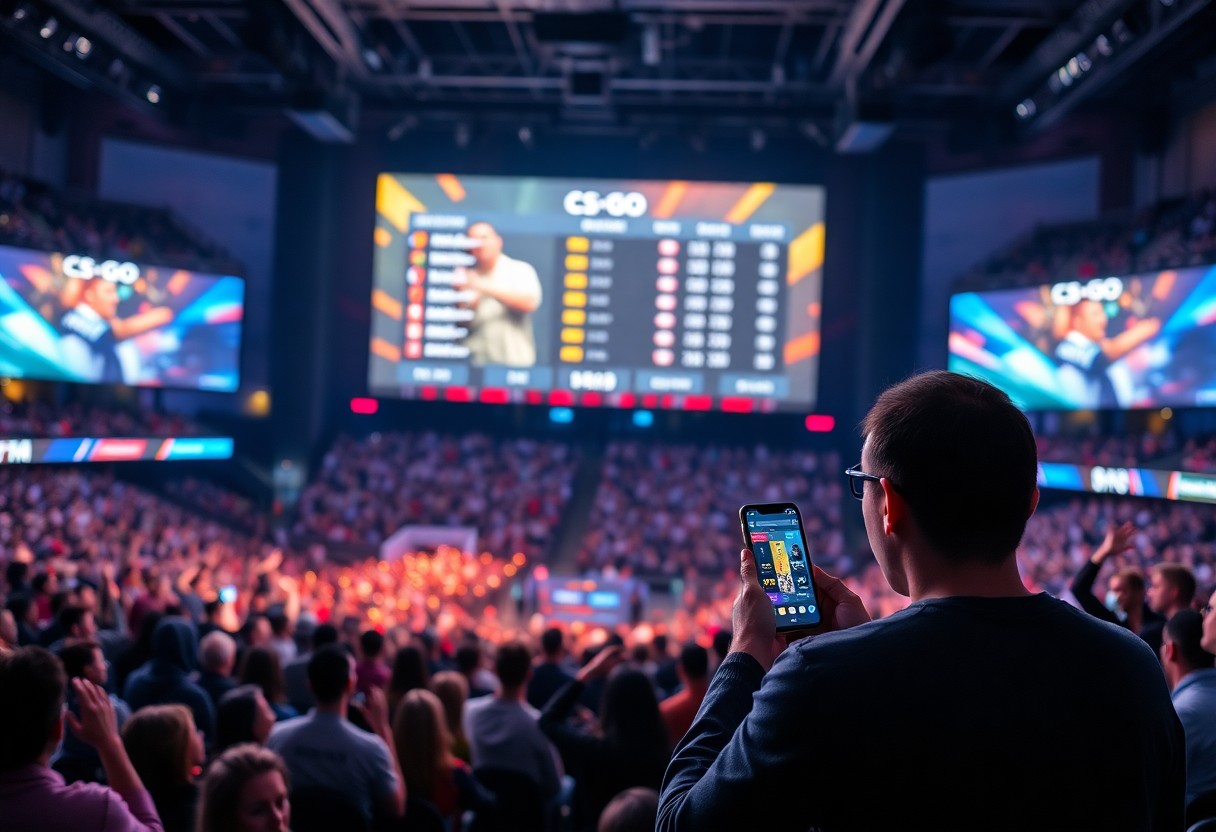With the League of Legends World Championship attracting millions of viewers and substantial sponsorship deals, one might assume that participating organizations are reaping significant profits. However, the financial reality tells a different story. Many teams face substantial losses due to high operational costs, including player salaries, travel expenses, and venue logistics, despite the tournament’s immense popularity. This post probes into the economic challenges faced by esports organizations during the prestigious event and highlights the underlying factors contributing to their financial struggles.
Overview of the League of Legends World Championship
A centerpiece of the esports calendar, the League of Legends World Championship showcases the top teams from around the globe competing for glory and a significant prize purse. Since its inception in 2011, the tournament has evolved into a spectacular event, combining high-stakes gameplay with extravagant production values, attracting millions of viewers and an ever-growing fanbase.
Historical Context
Any discussion of the World Championship must acknowledge its roots, as it began as a modest event with limited visibility, slowly transforming into one of the largest esports tournaments worldwide. Over the years, it has not only increased in size and scale but has also set benchmarks for competitive gaming, influencing the industry and inspiring countless players and organizations alike.
Current Participation Trends
For many organizations, participation in the World Championship has become a double-edged sword, as the financial implications remain significant in contrast to their potential for revenue generation. While the tournament attracts major branding opportunities, the costs associated with travel, player salaries, and production often outweigh the profits.
For instance, while the tournament has seen an increase in viewership and sponsorship deals, the financial burden for organizations often leads to deficits. Many teams face escalating expenses related to infrastructure, talent acquisition, and marketing, making it challenging to achieve profitability solely through tournament participation and exposure. This has led to a reevaluation of business models within esports, further complicating the landscape of competition in high-stakes events like the World Championship.
Financial Impact on Participating Organizations
Now, although League of Legends Worlds showcases incredible talent and engagement, the financial repercussions for many participating organizations often lean towards losses. The investment in team preparation, marketing, and event participation surpasses the revenues generated, making the event a challenging endeavor for most teams. Despite the prestige associated with competing at such a high level, financial sustainability remains a pressing concern.
Revenue Streams
One of the primary revenue streams for organizations at Worlds comes from sponsorships and partnerships, which can provide significant financial support. Additionally, merchandise sales during the event contribute to revenue, as fans seek to purchase team-branded apparel and collectibles. However, the challenge lies in converting visibility into concrete financial benefits.
Expenditure Breakdown
About the costs incurred, organizations face substantial expenses, including player salaries, travel accommodations, and marketing initiatives. These expenditures often escalate quickly during competitive events like Worlds, leading to a significant financial burden that many cannot fully recoup. To stay competitive, teams must invest heavily in their rosters and infrastructure, further straining their budgets.
Revenue generation typically fails to offset these costs, with many organizations reporting diminished profits despite their presence at high-profile events. The combination of travel expenses, lodging, and other logistical demands can quickly eat into any potential gains, overshadowing the short-term benefits of increased visibility and fan engagement. Consequently, organizations must navigate a complex financial landscape to ensure long-term viability while remaining dedicated to their competitive pursuits.
Case Studies of Participating Teams
Some organizations have reported significant financial struggles despite their participation in the LoL Worlds. Notable case studies include:
- T1: Estimated losses of $1.5 million in 2022 due to high operational costs.
- TSM: Generated only $500,000 in revenue while spending upwards of $2 million in salaries and marketing.
- Cloud9: Faced a $1 million deficit after reaching the quarterfinals in 2021.
- Fnatic: Recorded a 30% decrease in sponsorship income post-Worlds 2020.
Success Stories
Alongside the losses, some organizations have turned participation into profitable ventures. For instance, G2 Esports saw a 250% increase in merchandise sales during Worlds, helping to offset their operational expenditures significantly.
Struggling Organizations
At the same time, numerous teams are grappling with financial instability post-Worlds. Many have faced steep expenditures without the expected returns, primarily due to sponsorship deals failing to materialize.
Another factor contributing to these challenges is the increased competition for viewership and sponsorships. Organizations that initially thrived are now struggling to maintain their financial health as rising costs, coupled with stagnant revenue streams, threaten their sustainability. This has led to some teams reevaluating their strategies to focus on long-term viability rather than short-term participation outcomes.
Market Dynamics and Sponsorship Challenges
Not all organizations reap financial benefits from the League of Legends World Championship. Market dynamics complicate the landscape, with varying levels of brand exposure and return on investment affecting sponsorship decisions. As many orgs face these challenges, they must adapt their marketing strategies to stay competitive in a saturated environment.
Shifts in Audience Engagement
Sponsorship deals increasingly hinge on audience engagement metrics, a shift from traditional viewership statistics. Brands now seek deeper connections with fans through immersive experiences and interactive content, aiming to resonate with the community rather than simply chasing impressions.
Sponsorship Value vs. Costs
On the surface, sponsorship in esports may appear appealing, but organizations often find that the costs can outweigh perceived value. With high-profile sponsorships requiring substantial financial investments, the actual return may fall short if audience engagement doesn’t translate to tangible sales.
Dynamics in the sponsorship landscape necessitate a careful balance between investment and outcomes. Brands expect substantial engagement in return for their commitments; however, not all sponsorships deliver the anticipated impact. As esports continue to evolve, organizations must assess sponsorship deals critically, ensuring alignment with their overall marketing objectives while addressing potential pitfalls in cost versus value scenarios.
Future Prospects for Teams in LoL Worlds
Unlike previous years, the evolving landscape of esports may offer new opportunities for teams participating in LoL Worlds. As engagement metrics rise and fandom expands, organizations may find innovative ways to monetize their presence, though achieving profitability may still be challenging. Teams must adapt to the changing environment by leveraging partnerships and exploring diverse revenue streams in order to thrive in the competitive scene.
Potential Revenue Growth Areas
About the future prospects for teams in LoL Worlds, several potential areas for revenue growth have emerged. Organizations could capitalize on rising digital merchandise sales, unique content creation, and fan engagement initiatives. Additionally, exploring sponsorship opportunities in untapped markets and enhancing streaming experiences can lead to increased profitability for participating teams.
Strategic Adjustments
Growth for teams in LoL Worlds hinges on strategic adjustments that respond to market trends and fan expectations. Organizations must reevaluate their business models, focusing on optimizing fan interactions and monetizing their digital platforms more effectively.
In addition, teams should consider diversifying their revenue sources, such as investing in community-driven initiatives or collaborations with brands that resonate with their audience. Adapting to new technologies and platforms can enhance engagement and ultimately lead to sustainable growth. Building strong community ties will also contribute to establishing long-lasting loyalty, which is imperative for long-term success in the ever-evolving esports ecosystem.
Community and Ecosystem Reactions
To comprehend the impact of the LoL Worlds on participating organizations, it’s vital to examine community sentiments and ecosystem dynamics. While fans are passionate about the event and its excitement, many organizations struggle with the financials, leading to varied reactions from within the community. This discrepancy highlights a significant challenge—balancing enthusiasm for the competitive scene with the reality of sustaining viable business models in esports.
Fan Perspectives on Organizations
Perspectives on organizations competing in LoL Worlds often reveal a divide among fans. Some admirers express loyalty and support for their favorite teams, celebrating their participation regardless of financial outcomes. Others, however, voice frustration over perceived mismanagement and the lack of transparency in organizational operations. Such mixed opinions reflect the broader narrative of trust and expectations within the esports community.
Developer and Publisher Influence
Organizations involved in esports face various hurdles influenced significantly by the game’s developer and publisher.
Further examination reveals that the policies set by developers, including revenue sharing models and promotional opportunities, heavily affect the financial viability of participating teams. Many organizations rely on sponsorships and merchandise sales, yet the developers’ control over advertising rights and in-game monetization impacts the potential gains teams can realize. Consequently, teams might find themselves in a precarious position, where the allure of high-stakes competitions does not always equate to financial success. The resulting pressures highlight the intricate dance between esports organizations and their governing bodies.
Final Words
Following this analysis, it is evident that despite the monumental scale and fanfare associated with League of Legends World Championships, most participating organizations still face significant financial challenges. The high costs of operational commitments, coupled with fluctuating revenues from sponsorships and merchandise, often lead to net losses. This underscores the necessity for esports entities to strategize more effectively in managing expenditures and securing better revenue avenues to ensure long-term sustainability in a rapidly evolving industry.
FAQ
Q: Why do most participating organizations in LoL Worlds incur losses despite the event’s popularity?
A: The League of Legends World Championship, while a high-profile and exciting event, often leads to financial losses for many organizations. This happens primarily due to the high costs associated with team preparation, travel, and logistics. Teams invest heavily in training facilities, coaching staff, and player salaries, which can add up quickly. Additionally, the revenue from sponsorships and merchandise does not always cover these expenses, and larger organizations might not see a return on their investment if they do not advance far in the tournament.
Q: What are the main financial challenges teams face during the LoL Worlds?
A: Teams face several financial challenges during the LoL World Championship. First, the cost of travel, accommodations, and visas for players and staff can be substantial, especially if the event is held in a different country. Moreover, organizations often invest in additional resources to intensify training and improve performance prior to the tournament. The unpredictability of match outcomes means that if a team is eliminated early, the return on these investments can be very low. Lastly, the competitive nature of the eSports landscape means that prize money distribution does not always benefit all participants equally, further exacerbating financial losses.
Q: Are there any successful strategies that organizations use to mitigate losses at LoL Worlds?
A: Many organizations pursue various strategies to reduce losses during the LoL Worlds. They often seek to establish lucrative sponsorships and partnerships before the tournament, ensuring they can secure funding and promotional opportunities. Additionally, teams may diversify their offerings by engaging in content creation, such as streaming or social media campaigns, to generate supplementary income. Furthermore, some organizations focus on building a loyal fan base and enhancing merchandise sales around the tournament, leveraging their presence at the event to boost visibility and sales. Ultimately, strategic financial planning and a committed marketing approach help organizations navigate potential losses effectively.







